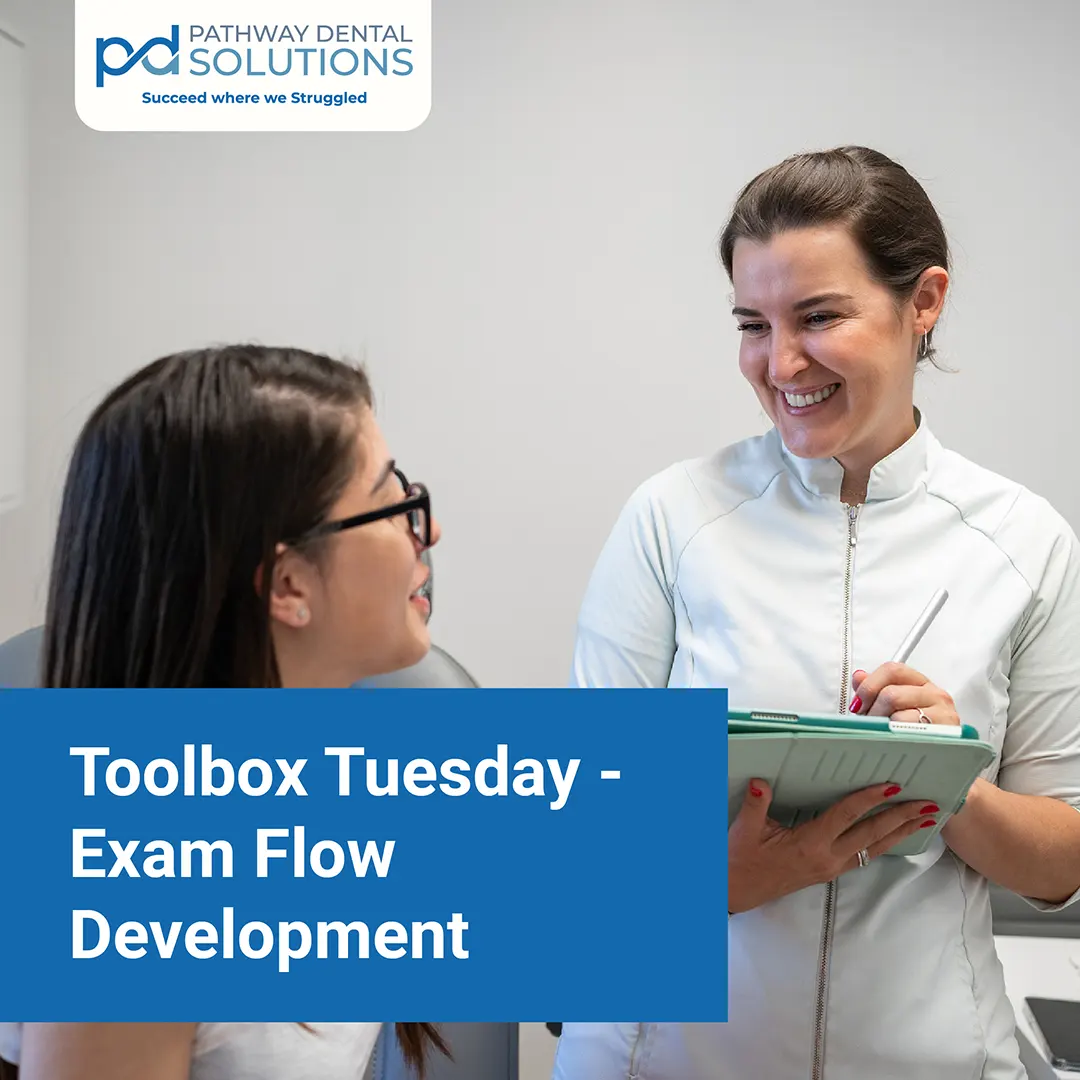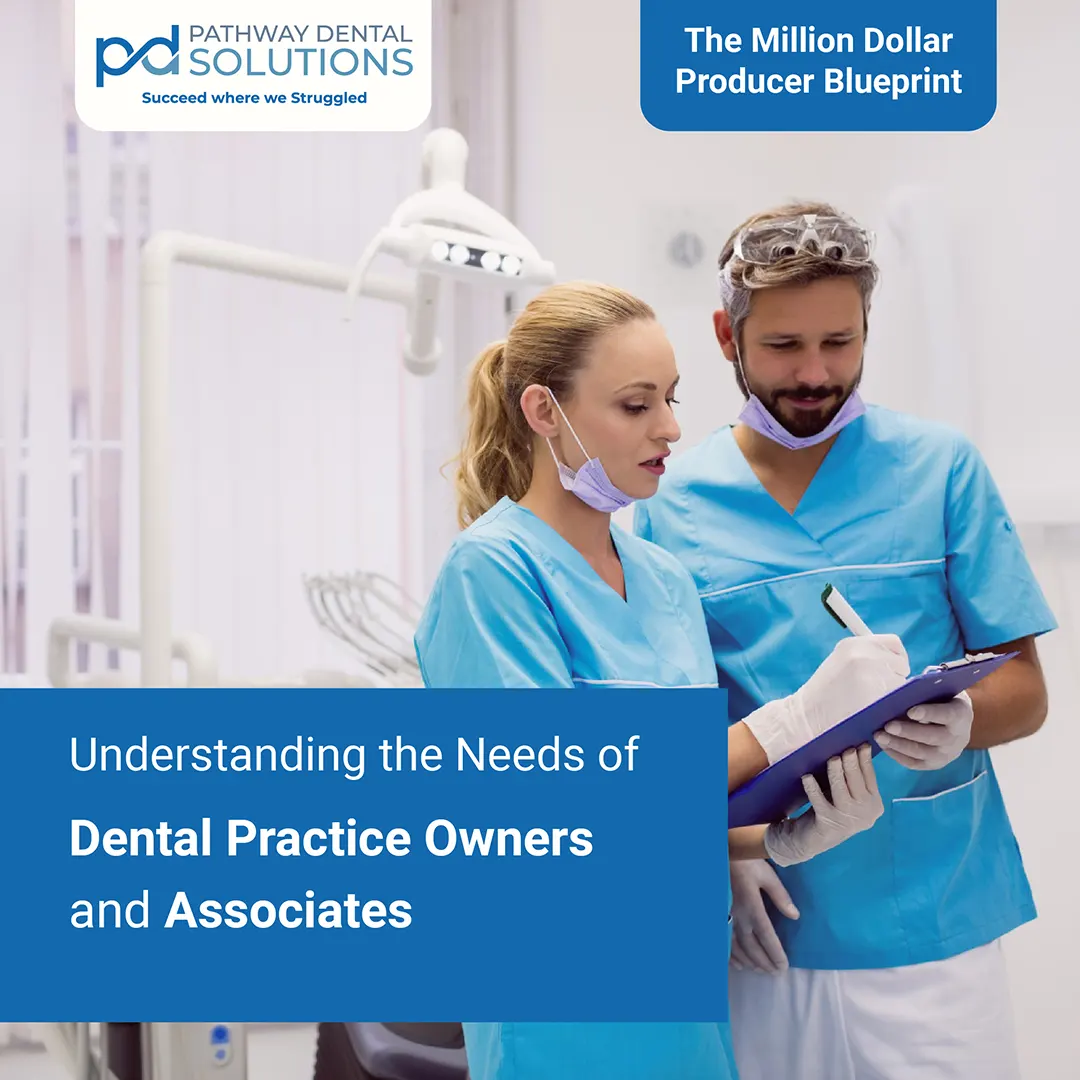
Welcome to the first blog post in our new series on the importance of exam flow and its impact on production. This series aims to uncover the essential strategies that will enhance productivity through effective exams.
Exam Flow is pivotal for increasing production and achieving significant production goals, like becoming million-dollar producers. The exam process starts even before the patient walks through the door.
Challenges of Solo Practitioners
- Solo Practice Isolation: Sten discussed how being a solo practitioner can often feel like practicing in a silo. Without external evaluation, the progress can be slow.
- Lack of Feedback: In isolated practices, there’s often a lack of constructive feedback from the team, leading to inefficiencies.
- Importance of Honest Feedback: Constructive feedback from team members is crucial for a realistic assessment of exam effectiveness.
The Necessity of Objective Frameworks
- Self-Evaluation and Team Culture: Honest evaluation and a feedback-friendly office culture are essential for growth.
- Reliance on Building Rapport: Initially, Sten relied heavily on patient rapport as an indicator of a successful exam, which is not always accurate.
- Objective Metrics and Tracking: Utilizing objective frameworks and tracking numbers (like scheduling and case acceptance rates) provide a clearer picture of exam effectiveness.
Transition to Structured Exam Processes
- Efficiency and Effectiveness: Streamlining the exam process reduces the time spent per patient while increasing scheduling rates and production.
- Consistent Framework: Implementing a set framework ensures the exam process is duplicatable and scalable.
- Role of SOPs: Standardized operating procedures (SOPs) ensure that new associates and team members can follow a consistent and effective exam process.
Key Realizations and Adjustments
- Numbers Over Personal Rapport: Understanding that personal rapport is secondary to clinical efficacy in terms of patient care and production.
- Framework Testing: By testing and refining the framework, practices can identify what works best and continually improve their processes.
- Efficiency Gains: More efficient processes often lead to better patient outcomes and higher production rates.
Lessons from Practice Acquisitions
- Evaluating Practice Claims: When acquiring new practices, it’s vital to assess if a “loyal patient base” translates to actual treatment and production.
- Objective Assessment: Evaluating the health and success of a practice should be based on performance metrics rather than anecdotal evidence.
Adjustments with Team Growth
- Onboarding Associates: As practices grow and new associates join, having a well-established exam protocol is critical.
- Training New Team Members: A structured protocol supports effective training, ensuring that new hires can quickly align with the practice’s standards.
Conclusion
Establishing a structured, efficient, and effective exam flow is crucial for increasing production and achieving practice goals. Consistent frameworks, honest feedback, and objective evaluations are key components that contribute to the success of high-performing dental practices. Stay tuned for more insights in our ongoing series on the importance of exam flow.
Feel free to reach out with any questions or to discuss how Pathway Dental Solutions can help optimize your practice’s exam flow and overall production.



